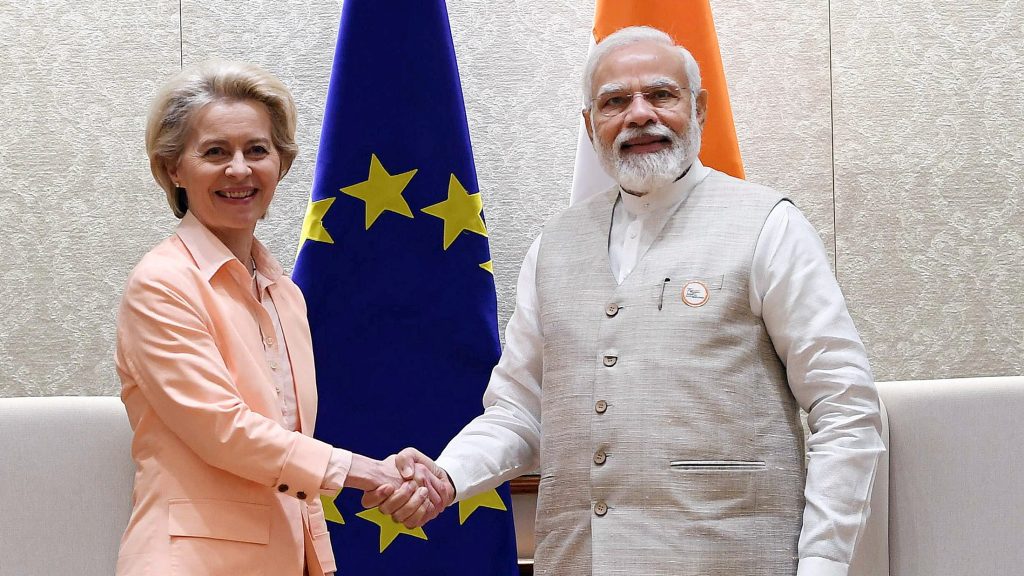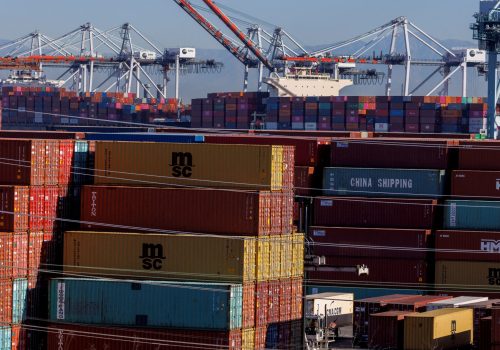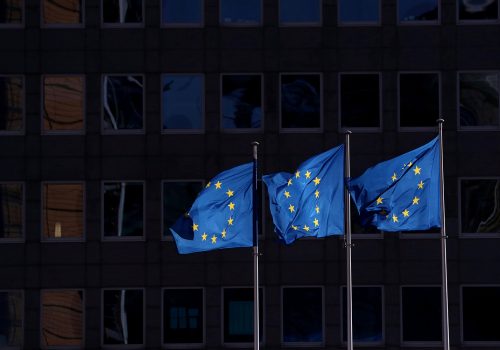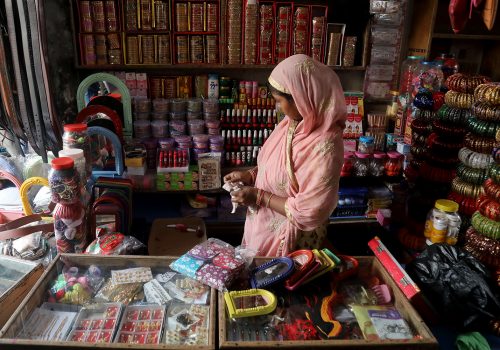India’s tepid response to Russia’s invasion of Ukraine rang alarm bells in Brussels, London, and Washington over whether New Delhi might veer off its path of strategic alignment with the West. Follow-up engagements have helped clear the air and create new opportunities for strengthening alliances.
First came an April 11 call between US President Joe Biden and Indian Prime Minister Narendra Modi, followed by a 2+2 ministerial dialogue during which US Secretary of State Antony Blinken and Secretary of Defense Lloyd Austin hosted their Indian counterparts in Washington. Last week, British Prime Minister Boris Johnson met Modi in India to continue forging ahead with the two countries’ free trade agreement (FTA).
And just this week, European Union (EU) Commission President Ursula von der Leyen traveled to Delhi on a mission that could mark a substantial and imminent uptick in trade and economic engagement between the two. She made no secret about the urgency of the moment.
“Our strategic cooperation should take place at the nexus of trade, trusted technology, and security, notably in respect of challenges posed by rival governance models,” she told a conference on Monday.
Brussels appears focused on taking its bilateral economic relationship with New Delhi to the next level. In addition to establishing a Trade and Technology Council, the two sides are also restarting negotiations on an FTA, which launched in 2007 but petered out by 2013. The EU recognizes that such a pact would be a global game changer, given that India is set to become the world’s third-largest economy within the next decade.
Japan, South Korea, and the ten-member Association of Southeast Asian Nations (ASEAN) all have FTAs with India. Now, the EU believes its own FTA can promote increased integration with the Indian economy and advance pressing global economic and strategic interests—not the least of which is weaning India off its over-reliance on Russia, particularly when it comes to weapons, as a strategic trade partner.
But not all aspects will be easily accomplished. Here are four key points to watch as the EU continues courting India:
- Trade negotiations with India are not straightforward. There is plenty of history to the EU-India FTA negotiation—and the hard parts aren’t likely to be ironed out quickly, even now with the new strategic impetus at play. Compromises on trade in the automotive industry, agriculture, and services (including visas for professionals) will be hard won on both sides and likely will take time.
- Momentum matters, but the agenda is complex. The earlier collapse of EU-India FTA negotiations was barely noticed, and both sides readily abandoned them. But while the the stakes are now higher, we should still expect a slow negotiation process. Politically, the EU needs strong commitments in areas such as labor and environment, subsidies, and intellectual property rights—which India is likely wary to offer, as it sees these issues as more tertiary to trade interests.
- There are implications for the United States, too. The Biden administration, which has assessed that FTAs are too costly politically, needs to take notice and recalibrate its own position. Its concern has merit, but it has wrongly argued that FTAs undermine US economic interests. Witnessing the EU negotiate better access to the Indian market than what US exports get could strengthen the argument for the United States to develop its own FTA agenda (although this is not likely until after the midterm elections in November).
- But will an EU FTA prove a bridge too far? Since abandoning the Regional Comprehensive Economic Partnership with China, Japan, ASEAN, South Korea, Australia, and New Zealand in 2018, India has moved aggressively to negotiate bilateral FTAs, seeking trade alliances in which it can pursue substantial export growth. India just concluded FTAs with the United Arab Emirates and Australia, and could do the same with the United Kingdom by the end of year. But shared strategic and economic interests with the EU do not assure that an FTA negotiation will be successful, and only time will tell whether this negotiation suffers the same fate of previous efforts between the two.
The opportunities are immense for the EU and India to significantly upgrade the profile of their relationship, particularly if this might accelerate New Delhi’s decoupling from the Russian and Chinese economies. But this will require leader-level attention on a sustained basis and stern marching orders to negotiators on both sides to find compromises to navigate the certain roadblocks ahead.
Mark Linscott is a nonresident senior fellow at the Atlantic Council’s South Asia Center and the former assistant US trade representative for South and Central Asian affairs, and WTO and multilateral affairs.
Further reading
Wed, Apr 20, 2022
How Biden can secure better trade terms
New Atlanticist By Mark Linscott
Here's why the US Generalized System of Preferences program could be a vital tool in addressing US export interests.
Fri, Mar 25, 2022
A new vision for EU-Asia data privacy cooperation
SouthAsiaSource By
The EU and its Asian partners have profound and tantalizing opportunities to reshape the global digital commons.
Mon, Mar 7, 2022
India must transform its micro, small, and medium enterprises
SouthAsiaSource By
For global companies, India’s push for micro, small, and medium enterprises is an untapped business opportunity that could have a far-reaching impact.
Image: Indian Prime Minister Narendra Modi shakes hands with European Commission President Ursula von der Leyen before their meeting in New Delhi on April 25, 2022. Handout photo from India's Press Information Bureau via REUTERS



